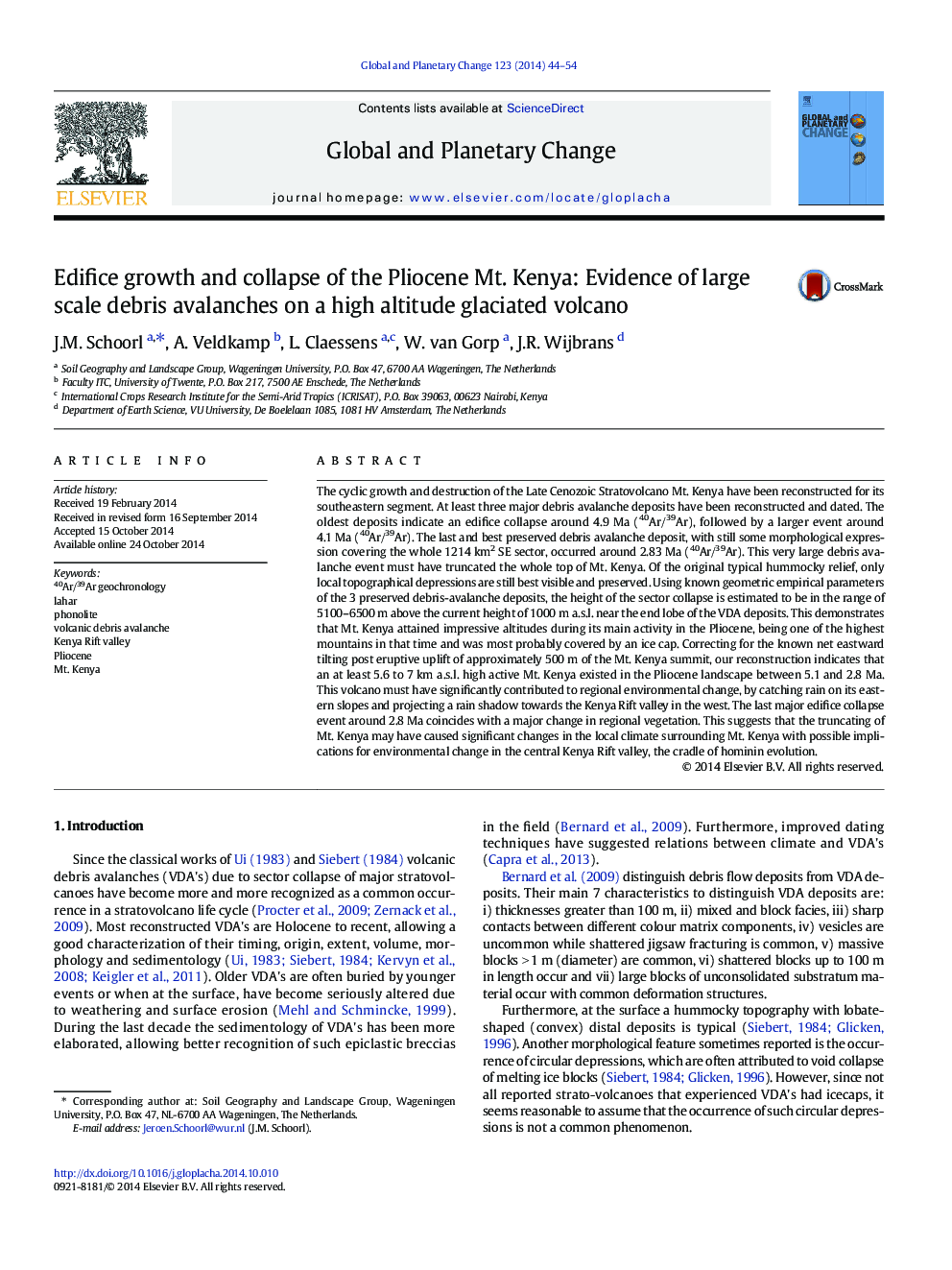| کد مقاله | کد نشریه | سال انتشار | مقاله انگلیسی | نسخه تمام متن |
|---|---|---|---|---|
| 6348133 | 1313640 | 2014 | 11 صفحه PDF | دانلود رایگان |
عنوان انگلیسی مقاله ISI
Edifice growth and collapse of the Pliocene Mt. Kenya: Evidence of large scale debris avalanches on a high altitude glaciated volcano
دانلود مقاله + سفارش ترجمه
دانلود مقاله ISI انگلیسی
رایگان برای ایرانیان
کلمات کلیدی
موضوعات مرتبط
مهندسی و علوم پایه
علوم زمین و سیارات
فرآیندهای سطح زمین
پیش نمایش صفحه اول مقاله

چکیده انگلیسی
The cyclic growth and destruction of the Late Cenozoic Stratovolcano Mt. Kenya have been reconstructed for its southeastern segment. At least three major debris avalanche deposits have been reconstructed and dated. The oldest deposits indicate an edifice collapse around 4.9 Ma (40Ar/39Ar), followed by a larger event around 4.1 Ma (40Ar/39Ar). The last and best preserved debris avalanche deposit, with still some morphological expression covering the whole 1214 km2 SE sector, occurred around 2.83 Ma (40Ar/39Ar). This very large debris avalanche event must have truncated the whole top of Mt. Kenya. Of the original typical hummocky relief, only local topographical depressions are still best visible and preserved. Using known geometric empirical parameters of the 3 preserved debris-avalanche deposits, the height of the sector collapse is estimated to be in the range of 5100-6500 m above the current height of 1000 m a.s.l. near the end lobe of the VDA deposits. This demonstrates that Mt. Kenya attained impressive altitudes during its main activity in the Pliocene, being one of the highest mountains in that time and was most probably covered by an ice cap. Correcting for the known net eastward tilting post eruptive uplift of approximately 500 m of the Mt. Kenya summit, our reconstruction indicates that an at least 5.6 to 7 km a.s.l. high active Mt. Kenya existed in the Pliocene landscape between 5.1 and 2.8 Ma. This volcano must have significantly contributed to regional environmental change, by catching rain on its eastern slopes and projecting a rain shadow towards the Kenya Rift valley in the west. The last major edifice collapse event around 2.8 Ma coincides with a major change in regional vegetation. This suggests that the truncating of Mt. Kenya may have caused significant changes in the local climate surrounding Mt. Kenya with possible implications for environmental change in the central Kenya Rift valley, the cradle of hominin evolution.
ناشر
Database: Elsevier - ScienceDirect (ساینس دایرکت)
Journal: Global and Planetary Change - Volume 123, Part A, December 2014, Pages 44-54
Journal: Global and Planetary Change - Volume 123, Part A, December 2014, Pages 44-54
نویسندگان
J.M. Schoorl, A. Veldkamp, L. Claessens, W. van Gorp, J.R. Wijbrans,